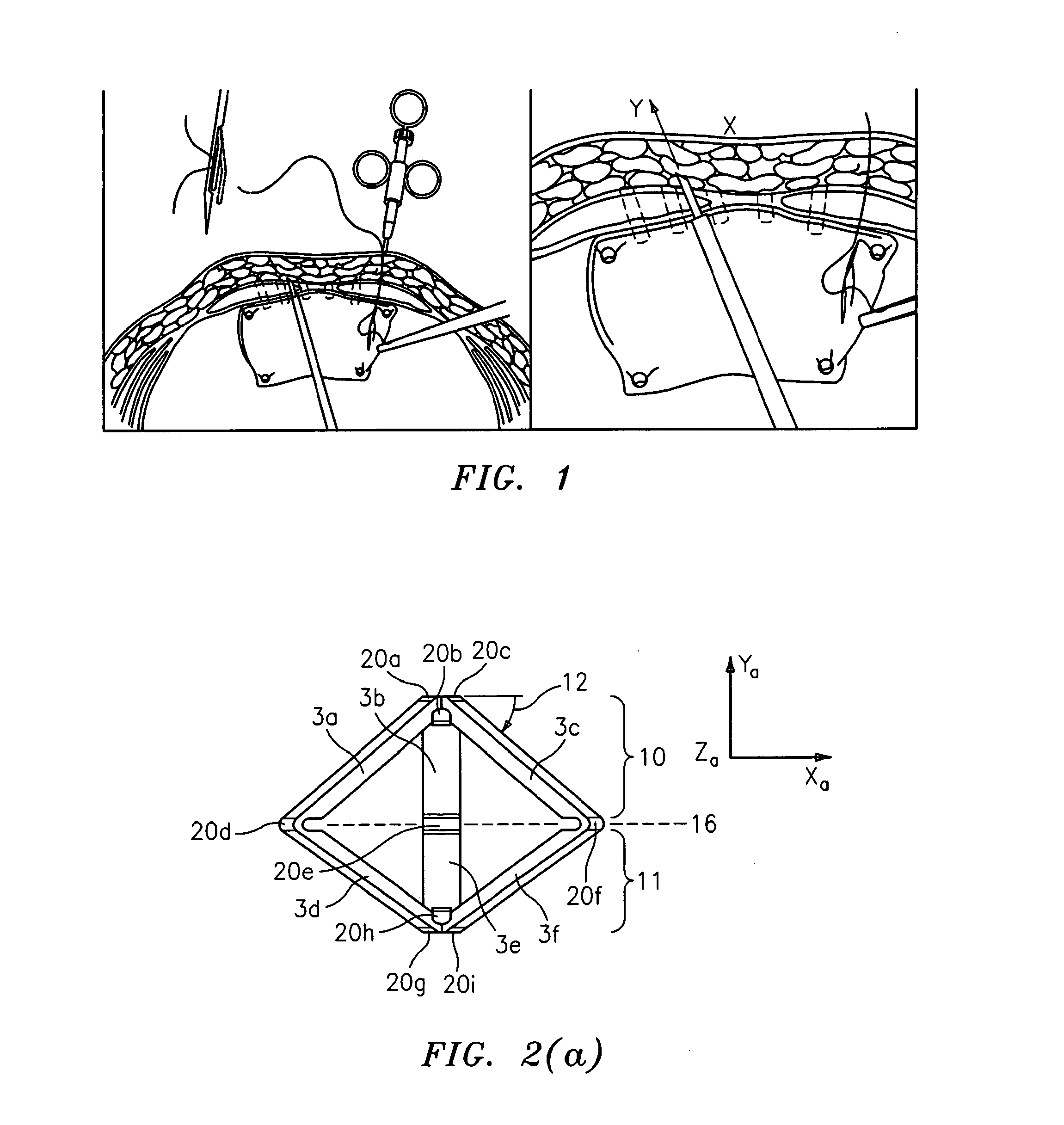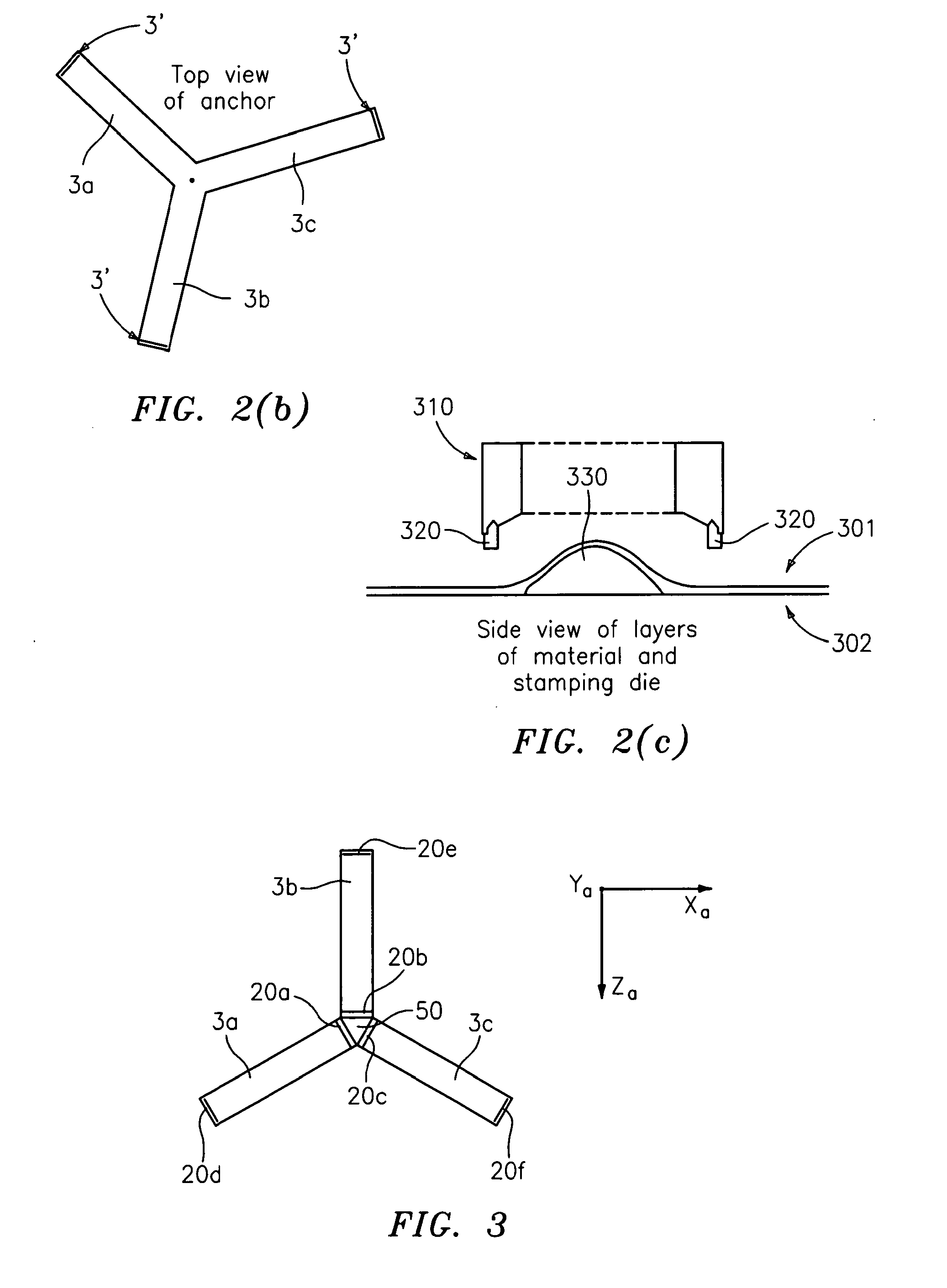System and method for hernia mesh fixation
a system and mesh technology, applied in the field of systems and methods, can solve the problems of repairing hernias, restricting blood flow to the tissue, pain or strangulation of the bowel, etc., and achieve the effect of preventing tissue damage and allowing transfacial fixation
- Summary
- Abstract
- Description
- Claims
- Application Information
AI Technical Summary
Benefits of technology
Problems solved by technology
Method used
Image
Examples
Embodiment Construction
[0041]Reference will now be made in detail to the present preferred embodiments of the invention, examples of which are illustrated in the accompanying drawings. The method and corresponding steps of the invention will be described in conjunction with the detailed description of the system.
[0042]Devices and methods provided in accordance with the invention may be used generally in surgical procedures. Such devices and methods are particularly advantageous in affixing mesh to tissue in the course of surgery to repair a hernia defect.
[0043]For purposes of illustration, and not limitation, exemplary embodiments of devices and methods provided by the invention are illustrated in FIGS. 2-21 herein. In accordance with a first embodiment, an improved fastener is provided that may be delivered using a delivery system.
[0044]As embodied herein and as depicted in FIG. 2(a), the fastener includes an anchor head portion 29. Various views of the fastener of FIG. 2(a) are provided in FIGS. 3-12 an...
PUM
 Login to View More
Login to View More Abstract
Description
Claims
Application Information
 Login to View More
Login to View More - R&D
- Intellectual Property
- Life Sciences
- Materials
- Tech Scout
- Unparalleled Data Quality
- Higher Quality Content
- 60% Fewer Hallucinations
Browse by: Latest US Patents, China's latest patents, Technical Efficacy Thesaurus, Application Domain, Technology Topic, Popular Technical Reports.
© 2025 PatSnap. All rights reserved.Legal|Privacy policy|Modern Slavery Act Transparency Statement|Sitemap|About US| Contact US: help@patsnap.com



